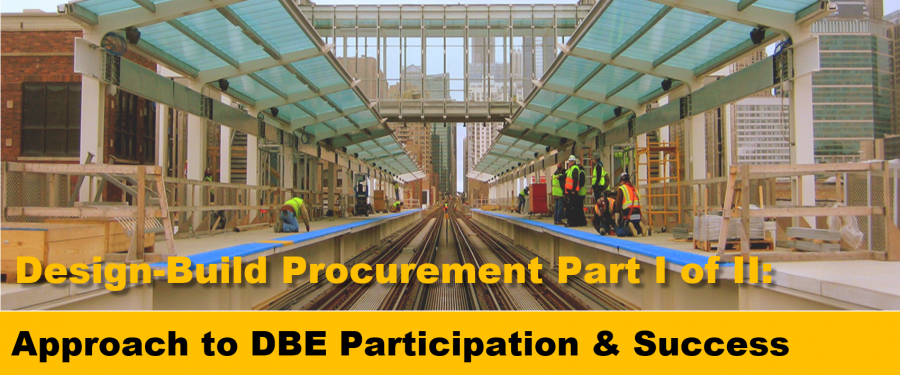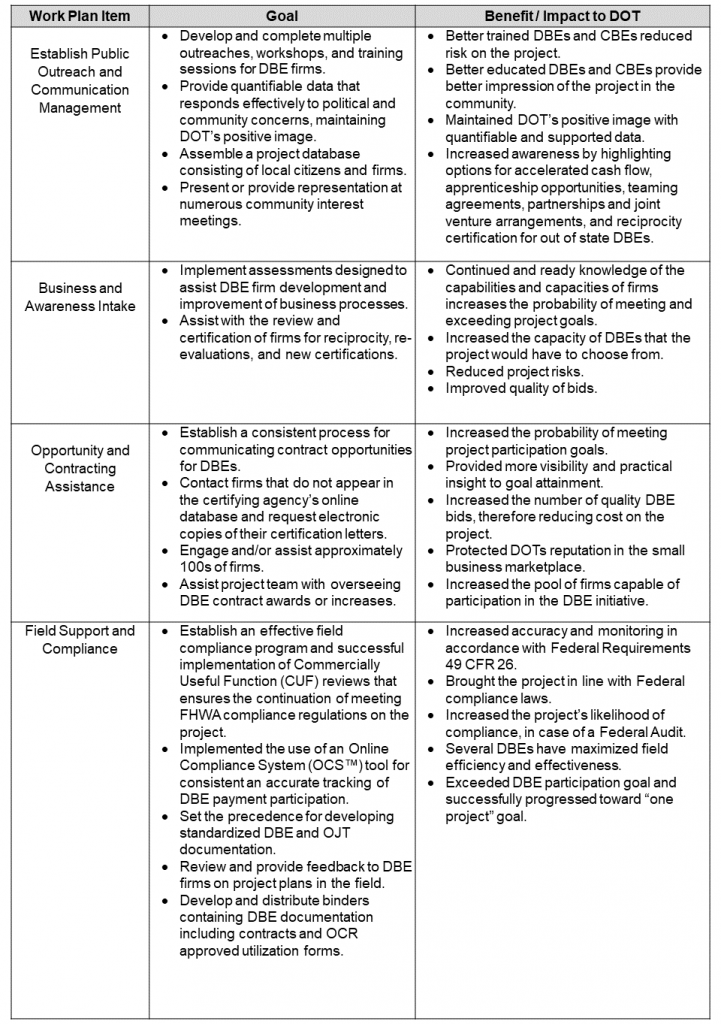Design-Build Procurement Part I of II: Approach to DBE Participation & Success
06/12/2020 | BTG Point of ViewINTRODUCTION
Departments of Transportation (DOTs) have the option of using various project delivery methods, however, there is a movement to increase the use of Design-Build project procurement. To encourage innovation and address financial constraints, DOTs are using a design-build procurement method intended to reduce cost, allow for an accelerated construction period, and increase efficiency. As a result, DOTs have cut hundreds of millions in cost and significant time off construction activity.
Part I of II
Q: What is the benefit of DOTs using the Design-Build model for project procurement?
A: The design-build procurement method changes the traditional sequence of work. It creates a single point of responsibility to reduce risks and overall costs. However, most small and disadvantaged construction contractors have established and organized their businesses around a traditional design-bid-build procurement method – where a complete set of drawings and specifications are provided prior to construction activity and the process influenced by various interpretations accordingly. To increase the rate of success of these businesses – also referred to as Disadvantaged Business Enterprises (DBE) – and help meet project utilization goals, DOT’s Office of Civil Rights (OCR) provide counsel and guidance on issues facing the DBE and local small business community.
Q: What is the program approach to meeting federal requirements on Design-Build projects?
A: A partnership must be established between the DOT, the construction manager and project management team to embrace the defined participation goals. To avoid problems with accurately monitoring the DBE program and progress towards the established goals, specialized firms with expertise in OCR regulations are needed. They assist the prime contractor in identifying qualified DBE companies, increase the participation of residents, and administer an effective compliance program. Oversight and coordination efforts with all stakeholders embracing outreach efforts results in the achievement of contract goals and compliance requirements that were properly identified and monitored consistently. These specialists analyze a significant amount of historical project data, properly coordinate previously submitted information and recommend proper interpretation and enforcement of 49 CFR Part 26 as well as other pertinent Equal Employment and Opportunity/Labor standards.
A “Four Pillar Approach” is used to organize a plan of action with project stakeholders. It includes steps taken to initiate a program management plan and tasks necessary for the successful completion of deliverables associated with the four pillars.
FOUR PILLARS
1. Establish Public Outreach and Communication Management
- Develop Marketing and Community Outreach Program
- Establish Communication Strategy
- Develop Political Management Strategy
2. Business and Awareness Intake
- Awareness Building
- Certification and Intake
- Baseline Assessments
3. Opportunity and Contracting Assistance
- Establish Strategy and Schedule for SOW Opportunity Sessions
- Affirmative Action and Training Programs
- Develop Workforce Development Program and Employment Opportunities Strategy
- Contract Assistance and Support
- Develop First-Tier Subcontract Execution Strategy
4. Field Support and Compliance
- Compliance Reporting
- Field and Business Supportive Services
- On-the-Job Training
Q: What is the methodology for implementing a work plan that leads to success in achieving compliance in a Design-Build project?
A: The following table delineates that methodology.
Design-Build Procurement Part II: Approach to DBE Participation & Success is now available. Click here.
About BTG: At BTG, we provide turnkey solutions that minimize risk and optimize the inclusion of small businesses on large, complex projects. Headquartered in Washington D.C., our management consulting firm is established as the preferred partner to lead inclusion programs for multi-billion-dollar construction projects and P3 initiatives. We work with public and private sector clients of all sizes to ensure that compliance requirements are met and apply exclusive technology tools and methodologies to cultivate the use of small businesses, so all operate at peak performance. To learn more about BTG, please visit www.btgworks.com.

